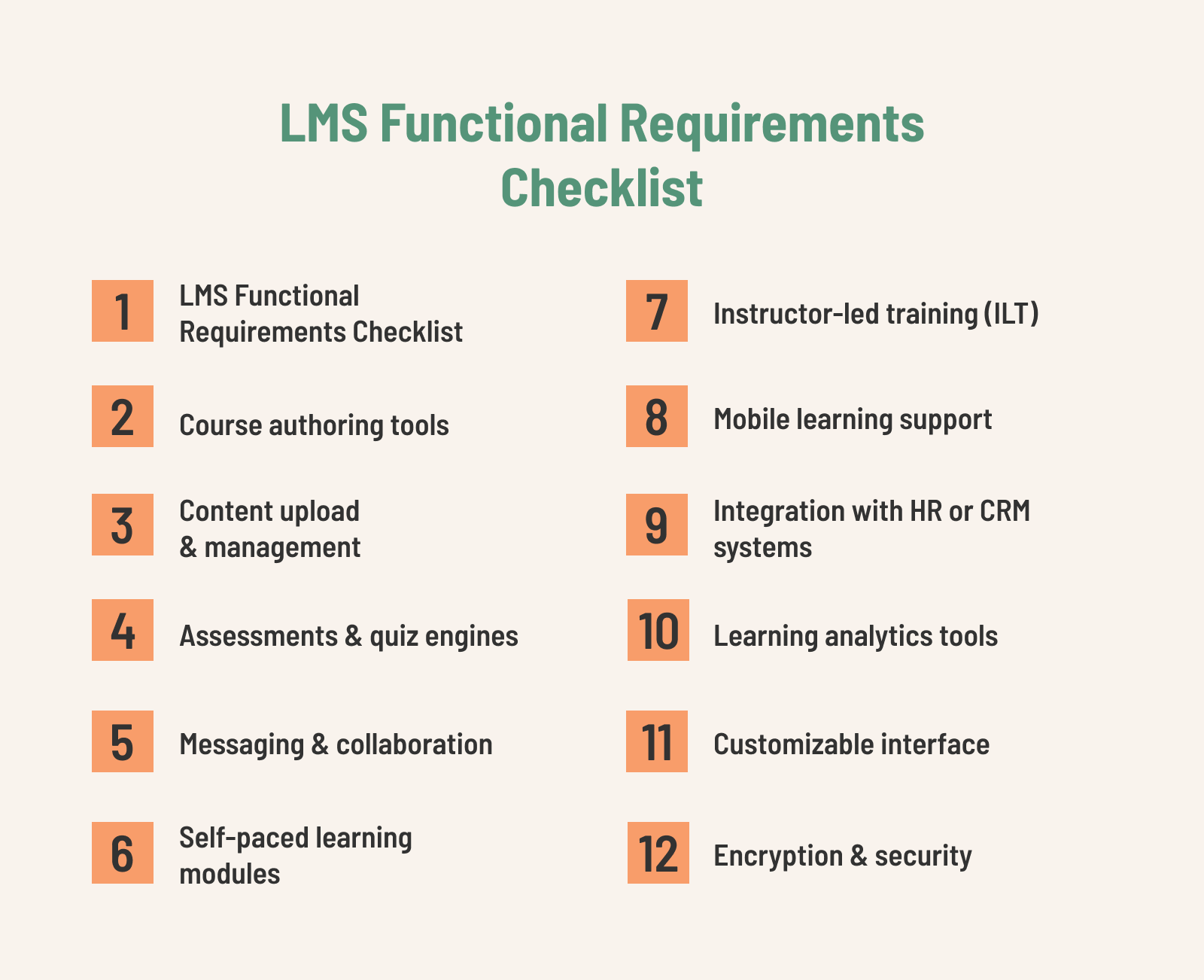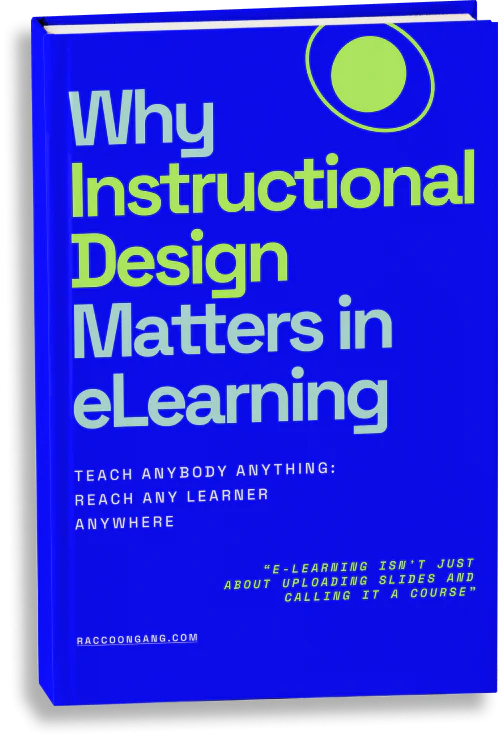With over 700 LMS platforms to choose from, narrowing down the right one without a clear checklist of LMS requirements can feel disorienting. If you’re fuzzy on which LMS capabilities matter (whether it’s reporting depth, mobile content delivery, compliance workflows, or dozens of other features), you can spend months chasing options and demos that just don’t fit.
- Rolling out compliance modules across a sales force
- Launching a semester’s worth of university courses
- Onboarding new hires with skill-based drills
- Managing certification programs and CE credits.
SaaS platforms such as Litmos and TalentLMS can spin up in days and include built-in learning analytics tools, yet bending them to support advanced SCORM/xAPI support or custom workflows often runs into guardrails. Open-source engines like Moodle or Open edX reward you with sprawling plugin catalogs and deep customization, but require constant hosting care.
Enterprise suites (SAP SuccessFactors or Oracle Taleo) bundle automated reporting, integration with HR or CRM systems, and audit-ready compliance at a premium. And if you crave absolute control, a custom build lets you define every detail (instructor-led training (ILT) hooks to UI quirks) while demanding a heftier development budget.
“When selecting an LMS platform, clarify which modules are essential and which you can skip. Academic programs reliant on frequent assessments need comprehensive grading engines, heightened security, and audit trails. Corporate training teams often lean on mobile learning support, streamlined interfaces, rapid SCORM/xAPI support, and direct integration with HR or CRM systems to roll out skill-based modules at scale.”
— Raccoon Gang’s EdTech Engineer
By 2025, LMS platforms have morphed dramatically. AI-driven content curation spots skill gaps and delivers personalized modules. VR scenarios and gamification triggers add immersion. True mobile learning support now includes offline playback, push notifications, and native iOS/Android apps for on-the-go access.
Advanced learning technology features span drag-and-drop quiz engines, threaded discussions, and AI tutors. Automated reporting generates real-time compliance logs and executive snapshots. Next, we’ll unpack each category—LMS requirements and functional criteria—so you can pinpoint the features that align with your strategy.
What Are LMS Requirements?
Your learning management system requirements can be set by business objectives, regulatory compliance, and learner experience needs. At Raccoon Gang, we’ve worked with hundreds of customers and we know that LMS system requirements include server capacity and scalability (to handle thousands of concurrent users and rich media), AES-256 data encryption (to satisfy GDPR and protect sensitive learner records), single sign-on federation (for seamless enterprise access), open-source LMS development services, and more features/options.
LMS technical requirements map out hosting (public cloud vs on-premise clusters), scalability playbooks, storage blueprints, single sign-on (SSO) flows, API endpoints. Functional LMS requirements cover how humans, including students and trainers, interact with each other: user roles and permissions, content pipelines, assessment engines, learning analytics tools, dashboards, and interactive overlays.
For example, when a network of 55+ English language schools serving over 280,000 students per year engaged us to consolidate fragmented WordPress-based sites into a unified Open edX® platform, they wrestled with syncing schedules, migrating socio-demographic data for each age group, and standardizing inconsistent progress records.
Relying on Open edX’s modular XBlock framework and multi-tenancy features, we implemented segmented UIs for juniors through adult learners, integrated with their Scheduling System and Student Portal via REST APIs, and secured every transaction with AES-256 at rest and TLS 1.3 in transit. Auto-scaling groups and database sharding ensured the system handled peak enrollments of 20,000 learners without downtime.
Separate these layers and watch IT, L&D, and business teams speak the same dialect about budgets, timelines, and deliverables.
An Overview of LMS Types and Their Characteristics
| LMS Type | Description | Example Providers |
| Cloud-based (SaaS) LMS | Vendor-hosted; spin up in days; built-in learning analytics tools; tiered subscription; SLA-backed uptime; seamless security patches | Litmos, TalentLMS, Docebo |
| Self-hosted (On-premise) LMS | Runs on your hardware; total control of LMS system requirements; AES-256 encryption at rest; segmented networks; patch cycles managed by IT | Moodle (self-hosted), Blackboard Learn |
| Enterprise LMS | Deep integration with HR or CRM systems; robust automated reporting; enterprise-grade encryption; compliance modules; mass user orchestration | SAP SuccessFactors, Oracle Taleo |
| Educational LMS | Campus SSO; Open edX LMS features like cohort management, accreditation workflows, research exports, grading engines built in | Open edX (hosted and SaaS), Canvas LMS |
| Commercial LMS | Off-the-shelf, intuitive UI, solid mobile learning support, prebuilt libraries, e-commerce for paid courses, marketing analytics dashboards | Skilljar, Absorb LMS |
| Open-source LMS | Free codebase; plugin catalogs; broad SCORM/xAPI support; theming flexibility; community-driven security patches | Moodle, Open edX |
| Custom LMS | Built from the ground up, course authoring tools embedded, brand-aligned UX, bespoke instructor-led training (ILT) workflows, proprietary analytics | In-house platforms |
| Mobile LMS | Native iOS/Android apps; offline playback; push alerts; device-level caching; UX optimized for field teams and remote learners | LearnUpon Mobile, EdApp |
| Collaborative LMS | Discussion forums, group assignments, social walls, integrated video conferencing, peer review modules | Microsoft Viva Learning, Moodle Workplace |
| Adaptive LMS | AI-driven pathways, recommendation engines, dynamic assessments, and competency mapping | Docebo Learn, TalentLMS (AI plugins) |
| Free LMS | No license fees; essential LMS capabilities; community support; optional paid add-ons | Chamilo, MoodleCloud (starter tier) |
| Closed-source LMS | Vendor-owned code, SLA-backed, built-in encryption and compliance, fewer customization options | Blackboard SaaS, D2L Brightspace |
| LMS with development tools | Ships with course authoring tools and SDKs; accelerates eLearning platform development; template frameworks; API sandboxes | Adapt Learning, Elucidat |
Crafting Your Technical Foundations
Beneath every slick interface live infrastructure blueprints that dictate uptime, latency, and data sanctity. Choose public cloud, private cloud, or on-premise clusters…each path shapes cost, control, and compliance. Storage must absorb heavy media files and databases with encryption at rest and off-site backups. GDPR and HIPAA demand data residency rules and tamper-proof audit logs.
For example, when Asociatia Techsoup migrated 20,000 users from two separate WordPress sites to a unified Open edX platform, they faced data-consistency and scaling hurdles. Raccoon Gang deployed the Lilac release on AWS, configured AES-256 encryption at rest, TLS 1.3 in transit, and automated snapshot backups. We preserved detailed socio-demographic profiles and progress reports, then enabled auto-scaling groups and database sharding so spring and autumn cohorts could enroll seamlessly. The result? Manual reporting dropped by 80 percent and concurrent access soared without a hitch.
Scaling relies on auto-scaling groups, load balancers, and sharded databases. Integrations via single sign-on (SSO) and APIs weld your LMS into enterprise IAM and integration with HR or CRM systems. Nail these LMS system requirements now and sidestep meltdowns when traffic surges or regulations shift.
- Hosting environment: Scenario 1: global enterprise needs geo-redundancy; Scenario 2: startup requires cost-effective cloud
- Security & encryption: AES-256 for data at rest; TLS 1.3 in transit; key vault management; intrusion detection
- Data storage & backups: high-availability object storage; snapshot cadence; cross-region replication
- Compliance & governance: GDPR data residency; HIPAA audit trails; consent workflows
- Scalability & performance: auto-scaling clusters; container orchestration; DB sharding; CDN edge caching
- Integrations & SSO: SAML/OAuth; corporate IdP sync; APIs for eLearning platform development; event webhooks.
LMS Functional Requirements Checklist
Functionality is your platform’s pulse: it shapes learner engagement, instructor workflows, and admin oversight. Your 2025 rollout hinges on clear LMS functional requirements drawn from a strong LMS features checklist. For instance, picture user roles and permissions granting precise access and course tracking and progress dashboards reflecting every quiz, video play, and badge in real time.
Layer on learning analytics tools to parse xAPI streams into predictive alerts before gaps widen. Miss one component and adoption flatlines, support tickets surge, and ROI drifts out of reach.
- User roles and permissions: multi-tier approvals, custom hierarchies, delegated admin rights, compliance checkpoints
- Course authoring tools: drag-and-drop editors, rich media uploads, branching scenarios, question-bank management for regulated courses
- Content upload & management: version control, metadata tagging, SCORM/xAPI support, bulk CSV/API imports, auto-archive routines
- Assessments & quiz engines: timed exams, random pools, auto-grading, rubric scoring, integrated proctoring
- Messaging & collaboration: threaded forums, live chat, group projects, social walls, in-app notifications, peer feedback loops
- Course tracking & progress: dashboards with completion stats, timestamps, certificates, competency heatmaps, Slack/email nudges
- Self-paced learning modules: on-demand playback, bookmark features, revisit reminders, adaptive timers
- Instructor-led training (ILT): session scheduling, attendance logs, webinar connectors (Zoom, Teams), breakout-room management, surveys
- Mobile learning support: responsive displays, push notifications, offline queues, device-level encryption
- Integration with HR or CRM systems: auto user provisioning, two-way enroll/complete sync, event webhooks
- Learning analytics tools: live dashboards, custom report builders, CSV/JSON exports, predictive insights, cohort comparisons
- Customizable interface: branding options, layout switches, theme packs, widget control, white-label tenants
- Encryption & security: AES-256 at rest; TLS 1.3 in transit; key vaults; audit logs; password policies
- VR/AR experiences: immersive simulations, 360° video walks, scenario labs, virtual practice environments.
Advanced LMS Capabilities in 2025
The bleeding edge of learning management blends cutting-edge tech with human-centered design to heighten engagement and efficacy. Today’s LMS capabilities include far more than video uploads and quizzes…platforms now generate content on demand, tutor learners with AI, and adapt lessons in real time.
Expect micro-learning snippets in your chat apps; immersive XR classrooms, and analytics that sense emotions as well as actions. These innovations demand updates to your LMS features checklist, ensuring your system delivers truly next-gen experiences.
- Generative AI–Powered Content Creation: Platforms harness LLMs to draft quizzes, multimedia summaries, and scenario simulations in seconds, reducing authoring time by up to 70 percent.
- Virtual AI Tutors and Assistants: AI agents grade assignments, plan lessons, and offer Socratic feedback, freeing instructors to focus on high-value mentoring.
- Learning in the Flow of Work: Micro-lessons pop up in Slack, Teams, or Salesforce—delivering just-in-time training without forcing learners into a separate portal.
- XR Metaverse Classrooms: Full-scale 3D environments let cohorts join virtual labs or lecture halls via VR/AR headsets, making collaborative simulations seamless.
- Voice-Enabled Interfaces: Integration with Alexa or Google Assistant enables hands-free navigation, audio quizzes, and spoken-answer assessments for greater accessibility.
- Curated Micro-Learning Marketplaces: Subscription-based libraries plug into any LMS via SCORM/xAPI support, offering prebuilt compliance drills, leadership snippets, and language packs.
- Emotion + Engagement Analytics: Systems analyze facial cues, discussion sentiment, and activity patterns to detect frustration or boredom and trigger adaptive interventions.
How Raccoon Gang Helps Define and Build Custom LMS Platforms
At Raccoon Gang, we partner with clients to translate business goals into LMS requirements and then bring those blueprints to life.
For instance, the Salmon Thrust Corporate Training Platform selected Open edX as the LMS backbone for its banking and financial upskilling, with our team tailoring Open edX LMS features to match their white-label needs.
First, we run discovery workshops to capture stakeholder needs—whether it’s integration with HR or CRM systems, custom course authoring tools, or SCORM/xAPI support. Next, we craft a feature roadmap and rapidly prototype wireframes.
Then our engineers spearhead eLearning platform development on Open edX, leveraging modular XBlocks, pluggable authentication, and responsive theming. Finally, we test performance under load, deploy to production, and back it with ongoing support.
- Discovery & requirements: stakeholder interviews, use-case mapping, role definitions
- Roadmap & prototyping: prioritized feature list, UX/UI mockups, feedback sprints
- Open edX integration: XBlock development, theming, SSO setup, API orchestration
- Testing & deployment: load testing, security audits, compliance checks, rollout planning
- Support & optimization: service-level monitoring, version upgrades, feature extensions
Learn more on our Open edX Custom Services page or explore success stories in our Case Studies section.



